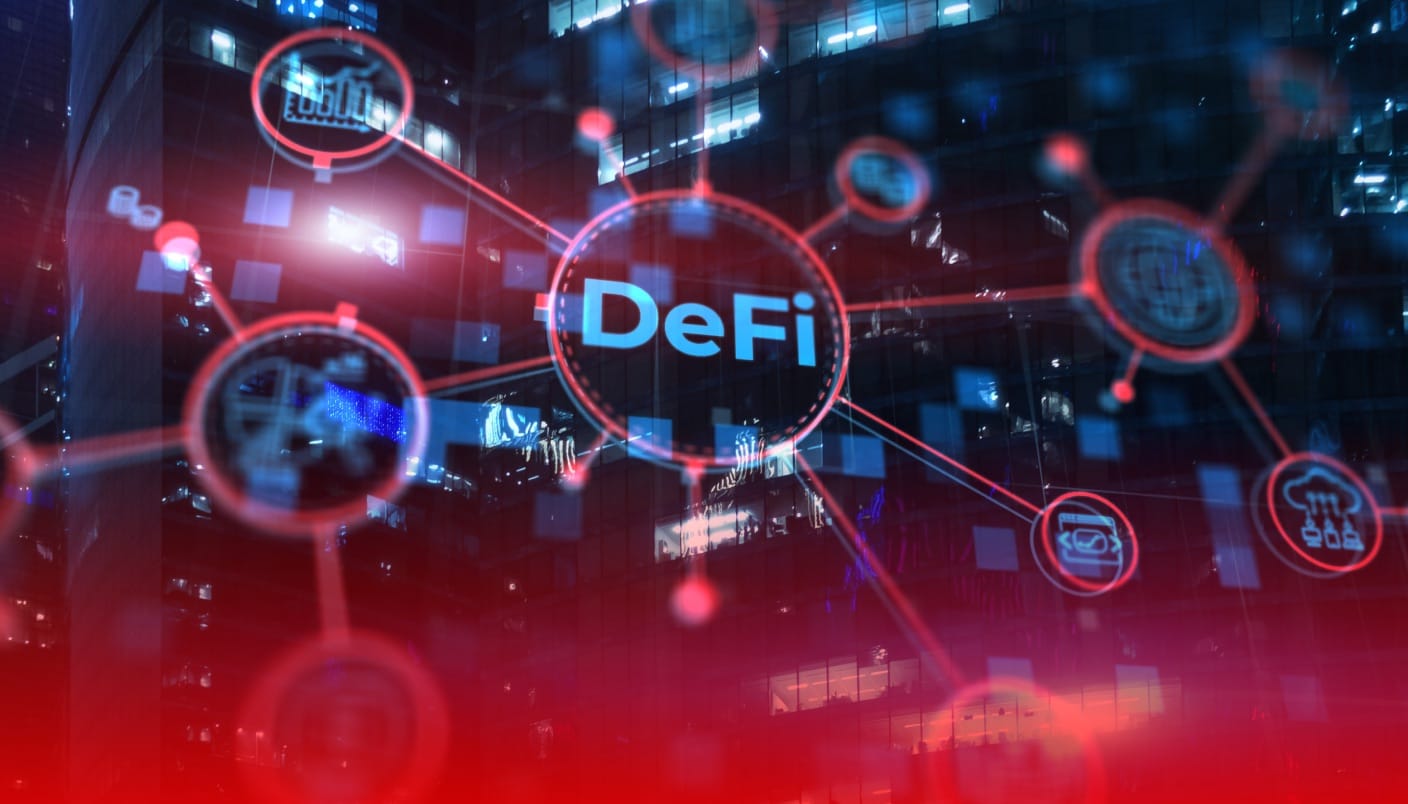Breaking News! 🚨 Top 10 brokers is here! See the most trusted trading platforms of 2024. Go now!
Automated Market Makers (AMMs): Liquidity Provision in DeFi
Delve into the world of automated market makers (AMMs) and their role in providing liquidity to decentralized finance (DeFi) protocols. Learn how AMMs work, their advantages over traditional market makers, and the impact of liquidity provision on DeFi ecosystems.
2 years ago, May 07, 9:37 am

The decentralized finance (DeFi) ecosystem has paved the way for innovative financial products and services, revolutionizing the traditional paradigms of finance. At the core of this burgeoning landscape lies the concept of Automated Market Makers (AMMs), a groundbreaking mechanism that facilitates decentralized liquidity provision and trading. AMMs have emerged as a crucial pillar of DeFi, enabling seamless asset exchange without relying on traditional order books or centralized intermediaries.
In this comprehensive article, we delve into the intricate world of AMMs, exploring their underlying mechanisms, popular protocols, and their impact on the DeFi space.
Overview of Automated Market Makers and Their Function in DeFi
Automated Market Makers (AMMs) are decentralized protocols that facilitate automated trading and liquidity provision within the DeFi ecosystem. Unlike traditional order book-based exchanges, AMMs employ advanced mathematical models to determine asset prices and facilitate trades without relying on external market makers or order matching engines. These protocols enable users to contribute liquidity by depositing pairs of tokens into liquidity pools, which are then used to facilitate trades between these assets. The key innovation of AMMs lies in their ability to automate the market-making process, ensuring continuous liquidity and efficient price discovery through algorithmic mechanisms.
AMMs have revolutionized the DeFi space by democratizing liquidity provision, allowing anyone to become a liquidity provider and earn fees from the trades facilitated by the pools they contribute to. This decentralized approach eliminates the need for centralized intermediaries, fostering a more open, transparent, and accessible financial ecosystem. Furthermore, AMMs have paved the way for innovative financial products, such as decentralized exchanges (DEXs), yield farming opportunities, and automated portfolio management strategies, all built upon the foundation of automated liquidity provision and trading.
Explanation of Liquidity Provision Mechanisms in AMMs
The liquidity provision mechanisms employed by AMMs are at the core of their functionality and innovation. These protocols rely on liquidity pools, which are smart contract-based reserves of tokens contributed by liquidity providers. When users deposit an equal value of two tokens into a liquidity pool, they receive liquidity provider (LP) tokens in return, representing their share of the pool.
The pricing and trading mechanisms of AMMs are governed by mathematical formulas, most notably the constant product formula. This formula ensures that the product of the quantities of the two tokens in the pool remains constant after each trade. As trades occur, the ratio of the token quantities adjusts, facilitating price discovery based on supply and demand dynamics.
Liquidity providers earn trading fees, typically a small percentage of each trade facilitated by the pool they have contributed to. These fees are automatically reinvested into the pool, increasing the liquidity providers’ share of the pool over time. This incentivizes users to provide liquidity, as they can earn passive income from the trading activity facilitated by their contributions.
Moreover, AMMs often incorporate mechanisms to prevent excessive price slippage and front-running, ensuring fair and efficient trading conditions. These may include dynamic fee adjustments, concentration of liquidity around certain price ranges, or the use of oracles to incorporate external price data.
Analysis of Popular AMM Protocols and Platforms
The innovation and popularity of AMMs have given rise to numerous protocols and platforms within the DeFi ecosystem. Each of these implementations builds upon the core principles of automated liquidity provision and algorithmic price determination, while introducing unique features and functionalities. Let’s explore some of the most prominent AMM protocols and platforms:
- Uniswap: Widely regarded as the pioneering AMM protocol, Uniswap was launched in 2018 and has since become one of the largest decentralized exchanges, facilitating billions in trading volume. It utilizes the constant product formula and allows for permissionless listing of token pairs.
- Curve Finance: Specifically designed for efficient trading of stablecoins and other pegged assets, Curve employs an advanced mathematical model optimized for low-risk, low-slippage trades within a specific asset class.
- Balancer: This protocol introduces the concept of weighted pools, allowing for customizable token ratios and dynamic fees, catering to diverse liquidity provision strategies and portfolio management objectives.
- SushiSwap: Forked from Uniswap, SushiSwap aims to provide a more community-driven and governance-focused AMM platform, with additional features like yield farming and liquidity mining incentives.
Kyber Network takes a different approach, using reserve managers to facilitate token trades across various liquidity sources, including AMMs, order books, and fed price reserves. This hybrid model aims to offer better rates for larger trades.
Protocols like Bancor, mStable, and Mooniswap explore innovative bonding curve models and capacitor mechanisms to improve capital efficiency and reduce divergence between asset prices and their external market rates.
While most AMMs operate on Ethereum, platforms like PancakeSwap (BNB Chain), Trader Joe (Avalanche), and Quickswap (Polygon) bring AMM functionality to other EVM-compatible blockchains, fostering multi-chain liquidity.
The analysis of these popular AMM protocols and platforms reveals their unique strengths, target markets, and innovative approaches to liquidity provision. Some prioritize simplicity and accessibility, while others cater to more advanced strategies and specific asset classes. However, they all share the common goal of fostering decentralized liquidity and efficient, automated trading within the DeFi space.
Case Studies of Successful AMM Implementations
To illustrate the real-world impact and success of AMMs, let’s explore a few case studies that highlight their transformative potential within the DeFi ecosystem.
One of the most prominent success stories is Uniswap, which has emerged as the leading decentralized exchange built on an AMM model. Since its launch in 2018, Uniswap has facilitated billions of dollars in trading volume, cementing its position as a pioneering force in the AMM space. Its simplicity, accessibility, and permissionless listing have attracted a diverse range of users, from individual traders to decentralized applications (dApps) seeking seamless token swaps. Uniswap’s success has inspired numerous forks and derivatives, further fueling innovation within the AMM landscape.
Another notable case study is Curve Finance, which has become the go-to platform for efficient trading of stablecoins and other pegged assets. By optimizing its mathematical models for low-slippage trades within this specific asset class, Curve has addressed a critical need within the DeFi space. Its innovative approach has attracted significant liquidity, with billions of dollars locked in its pools, facilitating seamless swaps between various stablecoins and facilitating the growth of decentralized lending and borrowing platforms.
Beyond decentralized exchanges, AMMs have also found success in powering innovative financial products and strategies. Platforms like Yearn Finance and Harvest Finance have leveraged AMMs to create yield optimization strategies, allowing users to automatically shift their assets across various DeFi protocols in search of the highest yields. These platforms demonstrate the versatility of AMMs, extending their applications beyond simple token swaps and into the realm of automated portfolio management.
Considerations for Liquidity Providers and AMM Participants
While AMMs have revolutionized the DeFi space, offering attractive opportunities for both liquidity providers and traders, it is crucial to understand the associated risks and considerations to navigate this landscape effectively.
For liquidity providers, one of the primary concerns is impermanent loss, which refers to the temporary loss of funds that can occur due to the fluctuation of token prices relative to each other. As the ratio of tokens in a liquidity pool adjusts to facilitate trades, the value of a liquidity provider’s deposited assets may deviate from their original value, resulting in potential losses if they withdraw their liquidity at an inopportune time. Mitigating strategies, such as providing liquidity for less volatile asset pairs or utilizing concentrated liquidity positions, can help reduce this risk.
Another consideration for liquidity providers is the risk of smart contract vulnerabilities or exploits. As AMMs are built on smart contracts, any security flaws or bugs could potentially lead to the loss of funds. Thorough audits, responsible disclosure processes, and active monitoring of AMM protocols are essential to mitigate these risks.
For traders and AMM participants, slippage is a critical factor to consider. Slippage refers to the difference between the expected trade price and the actual execution price, which can be significant for large trades or trades involving illiquid asset pairs. Participants should carefully evaluate the liquidity conditions and utilize slippage tolerance settings or advanced order types to manage this risk effectively.
Additionally, front-running and sandwich attacks are potential threats in the AMM ecosystem, where malicious actors can exploit the transparency of pending transactions to extract value unfairly. AMM protocols have implemented various countermeasures, such as dynamic fees and batched auctions, but participants should remain vigilant and understand these risks.
Finally, both liquidity providers and traders should stay informed about the development, governance, and tokenomics of the AMM protocols they engage with. Active community participation, monitoring of protocol updates, and understanding the incentive structures can help navigate the rapidly evolving AMM landscape more effectively.
Get SCTA's daily newsletter in your inbox every weekday.
You may unsubscribe at any time.
